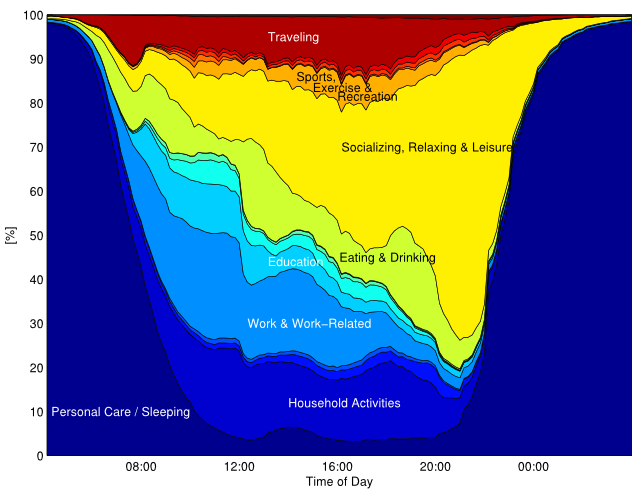TimeUse
Marko Borazio and Kristof Van Laerhoven
Description

Wearable sensing systems, through their proximity with their user, can
be used to automatically infer the wearer’s activity to obtain detailed
information on availability, behavioural patterns and health. For this
purpose, classifiers need to be designed and evaluated with sufficient
training data from these sensors and from a representative set of users,
which requires starting this procedure from scratch for every new
sensing system and set of activities. To alleviate this procedure and
optimize classification performance, the use of time use surveys has
been suggested: These large databases contain typically several days
worth of detailed activity information from a large population of
hundreds of thousands of participants. In this project we use a strategy
first suggested by Partridge and Golle [1] that utilizes time use
diaries in an activity recognition method. We offer an evaluation of the
German Time Use database, showing that certain important features could
be useful for activity recognition. By cross-validating across the 5160
households in this new data with activity episodes of 13798 individuals,
especially distinctive features turn out to be time and participant’s
location. The scripts used in this study can be obtained to be used on
the German Time Use Study from 2001/2002. Further details can be found
in the paper.
[1] K. Partridge and P. Golle, "On Using Existing Time-Use Study Data
for Ubiquitous Computing Applications". UbiComp'08
Download
Download the zip-file Download the scripts here.
Citation
Marko Borazio and Kristof Van Laerhoven, "Improving Activity Recognition without Sensor Data: A Comparison Study of Time Use Surveys". 4th International Augmented Human Conference (AH2013), ACM Press, 2013.
Disclaimer
You may use this data for scientific, non-commercial purposes, provided that you give credit to the owners when publishing any work based on this data.